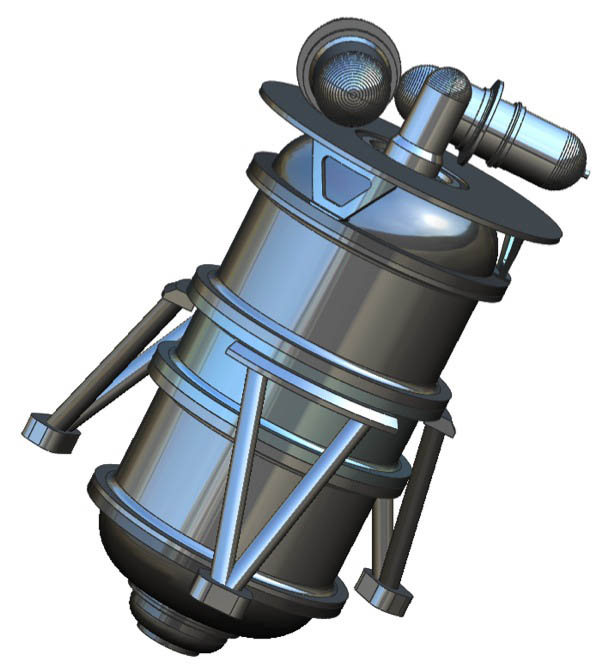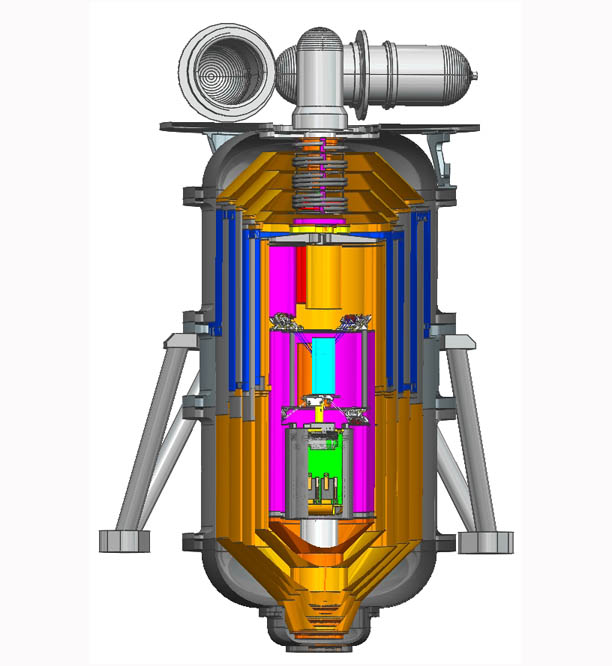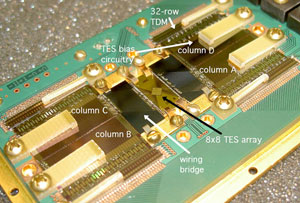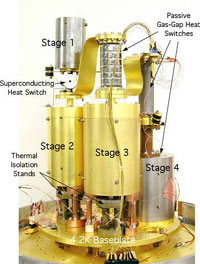 |
Goddard Space
Flight Center NASA > GSFC > Astrophysics Science Division > IXO |
|
The X-ray Microcalorimeter Spectrometer (XMS) provides high spectral resolution, non-dispersive imaging spectroscopy over a broad energy range. The driving performance requirements are to provide spectral resolution of 2.5 eV over the central 2×2 arcmin in the 0.3–7.0 keV band, and 10 eV to the edge of the 5.4 × 5.4 arcmin field of view. See Science Performance Requirements.
XMS spectroscopic capability will provide extraordinary sensitivity to absorption features, via iron Kα and many other metal species, and will be uniquely powerful in revealing conditions in the immediate vicinity of the supermassive black holes, including black-hole driven winds. A resolving power the XMS will enable determination of the state of galaxy cluster evolution, measure redshifts directly from X-ray observations, and allow turbulence to be measured in the intracluster medium. Complex spectroscopy will reveal the velocity, column density, metallicity and ionization structure of the outflows for detailed comparison with physical models, which are at present completely unconstrained. See IXO Science Goals.

|

|

|
|
1. XMS—side view. Click the image for a larger view |
2. XMS—back view. Click the image for a larger view |
3. XMS—cutaway view. Click the image for a larger view |

Photograph of a TES array and low-temperature readout components. An 8×8 Goddard TES array is embedded in a 4-column NIST time-division multiplexer testbed. This testbed was used for demonstrating simultaneous readout of 16 TES channels, each with better than 3 eV resolution, using only two amplifier chains. Click the image for larger view.
One candidate technology under development for the IXO microcalorimeter is the superconducting transition-edge sensor (TES) microcalorimeters, that convert individual incident X-ray photons into heat pulses and measure their energy via precise thermometry. A TES uses the narrow superconducting-to-normal-state transition (<1 mK) of a thin metal film as an exceedingly sensitive thermometer (<1 μK). A small change in temperature via absorbed photon creates a large change in resistance, and thus a pulsed decrease in the device current. The height of current pulse is proportional to the energy of the absorbed photon.
Imaging TES detectors for XMS will have at least four imaging elements connected to one TES through links with different thermal conductances. Position information will be obtained from analysis of the pulse shapes.
Thermodynamic´s limits determine the spectral resolution of the XMS and drive the need for operation at a temperature below ˜0.05 K. Although extraordinarily cold, such temperatures can be readily achieved and maintained using flight-proven techniques. See XMS cooling system.
IXO has an international team of technology development in the U.S., Japan and Europe, all working on the development of microcalorimeter systems.


Photograph of technology demonstration of a Continuous Adiabatic Demagnetization Refrigerator under development at NASA´s Goddard Space Flight Center.
The microcalorimeter requires a cooling system to cool to below 5 K and a Cryogenic Adiabatic Demagnetization Refrigerator (CADR) to cool from below 5K to ~35 mK. This system has the advantage of having no stored cryogens, thus maximizing the lifetime/mass ratio for the instrument.
Cooling of the detector stage will be achieved using a multistage CADR, which provides the necessary cooling power down to 50 mK. The warmer stages of the CADR are sequentially linked through heat switches and then cycled to transfer heat to the relatively warm cryocooler interface. A mechanical cryocooler will provide the <5 K heat sink for the CADR and will actively cool several thermal shields within the cryostat.